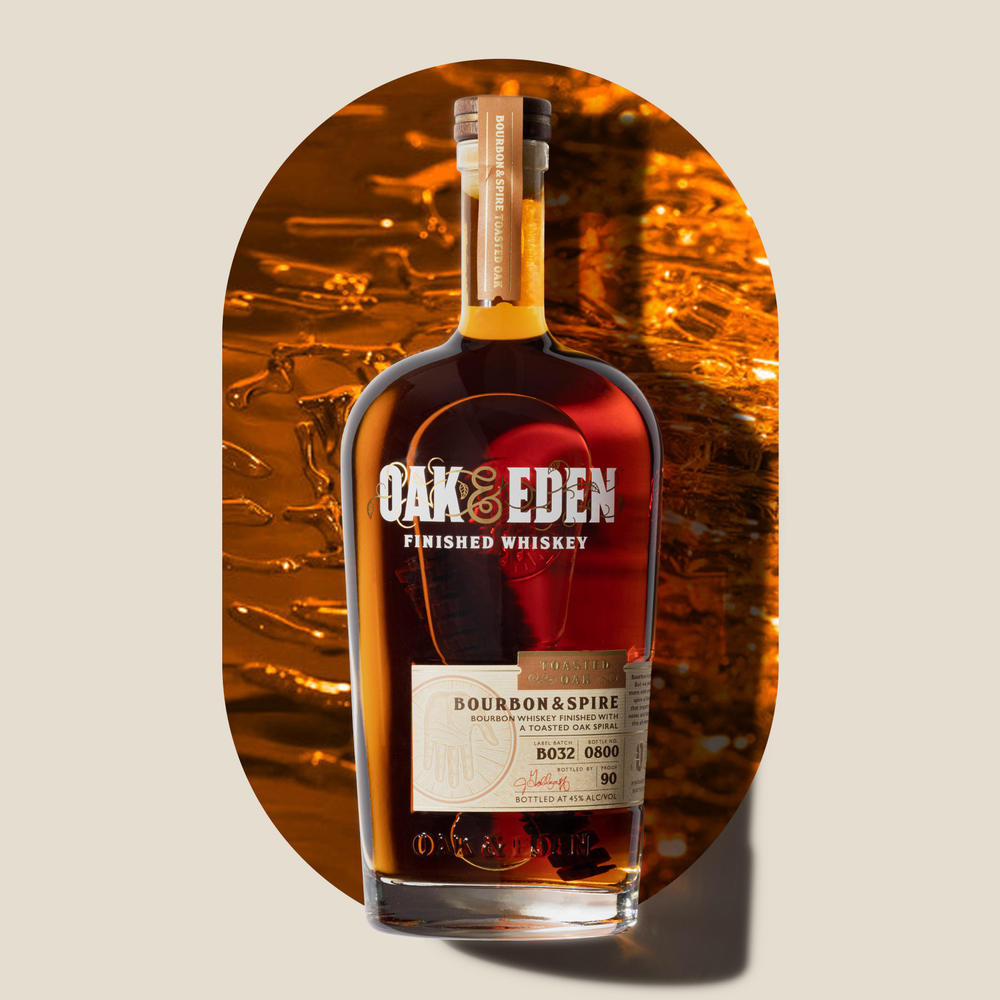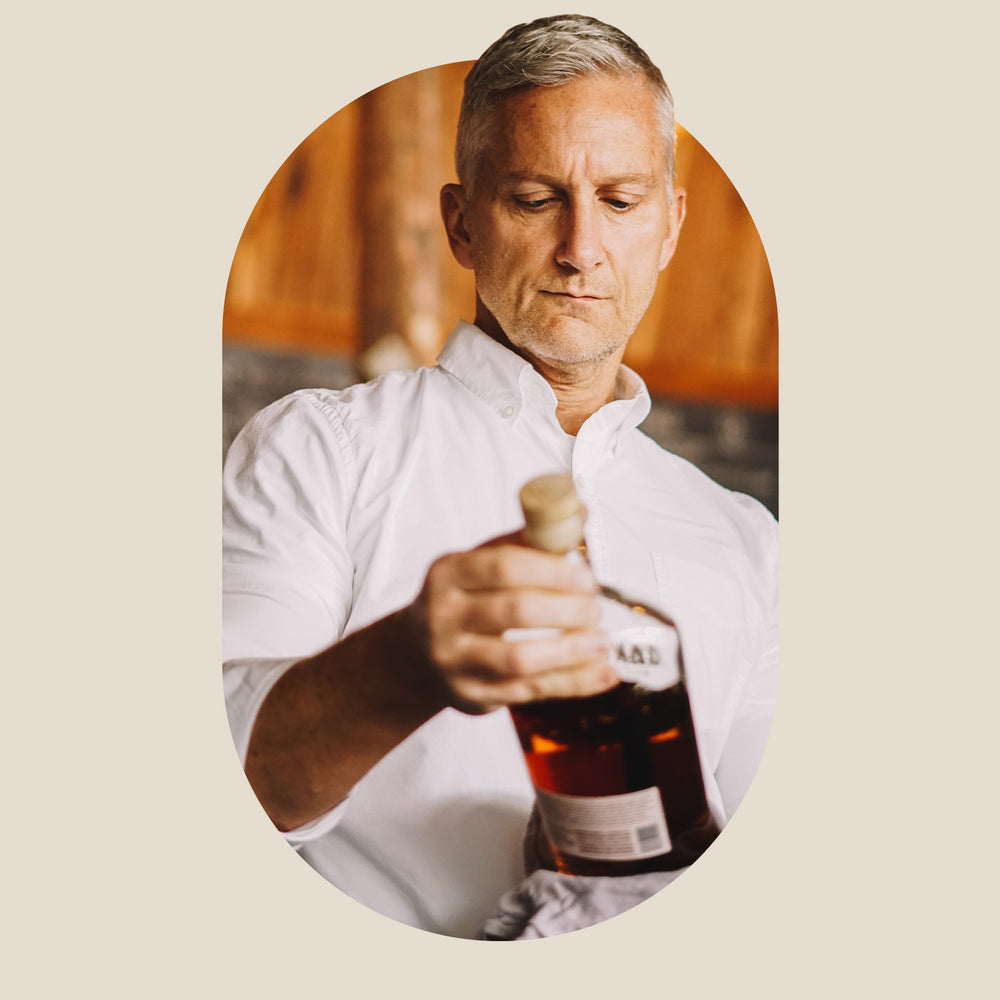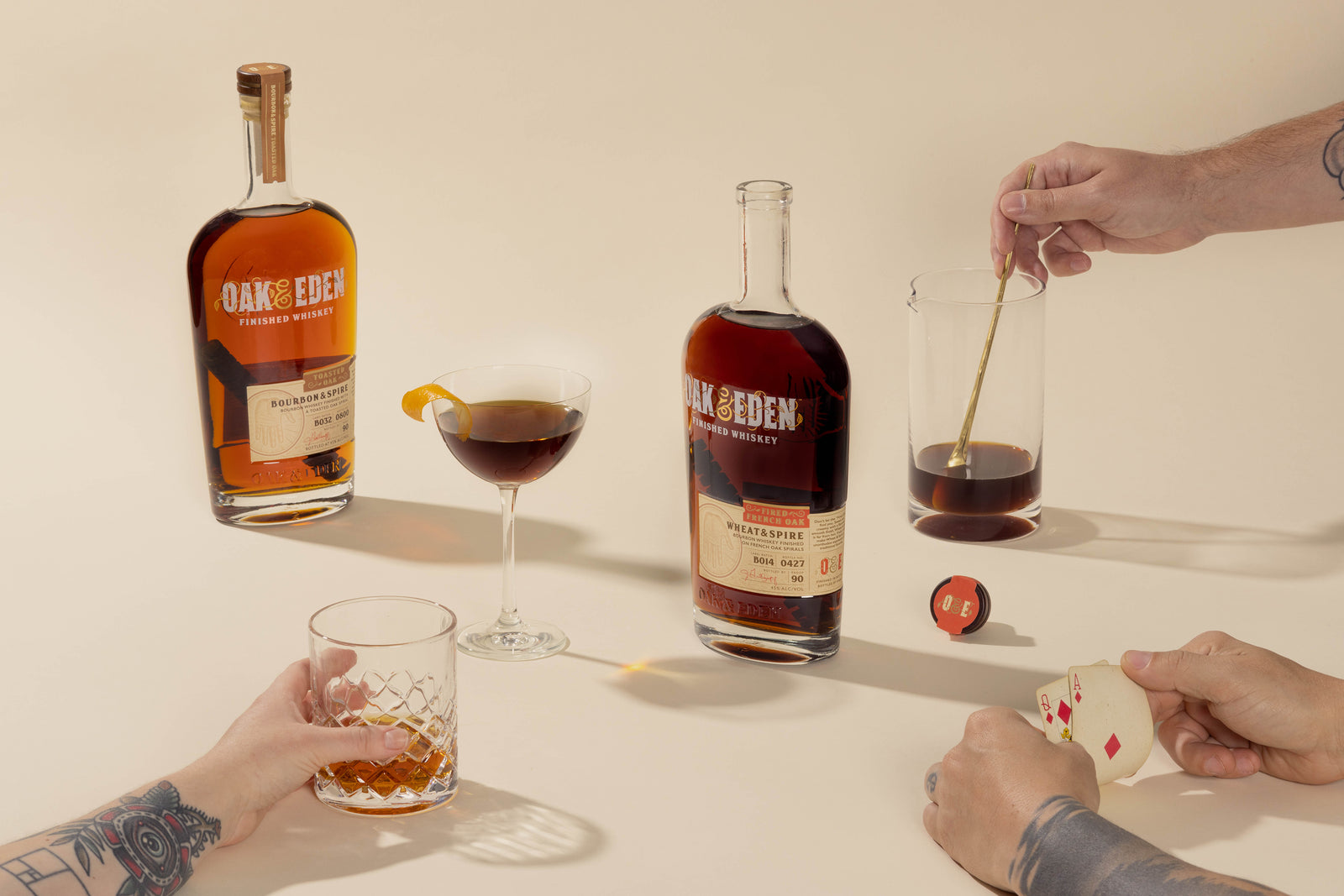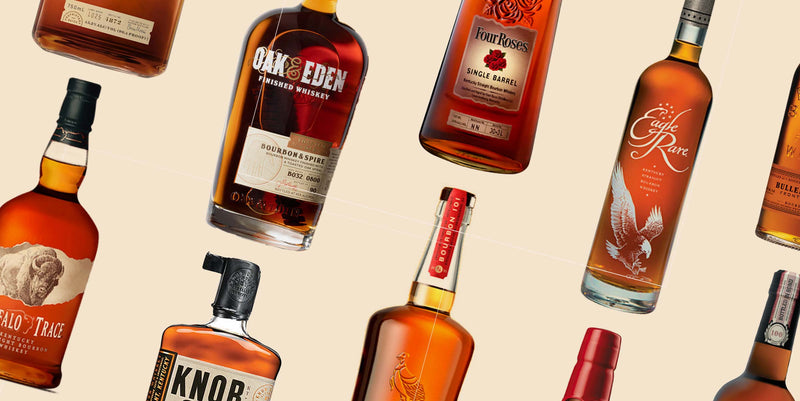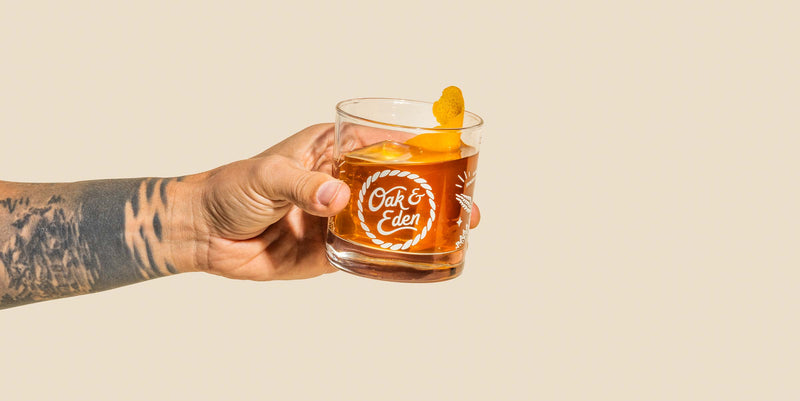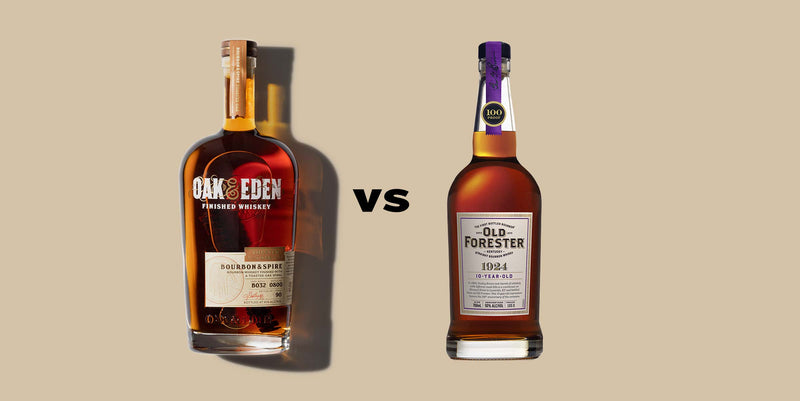What Is Whiskey Made Of?
The next time you’re at the bar, consider gravitating towards the smoky, dark, and intense bite of whiskey. Whether you choose to sample this liquor on its own or indulge in a mint julep, a Manhattan, or an old fashioned, it promises to be simple, classic, and delicious.
If you like whiskey or are just looking to learn more about this alcoholic beverage, you’ll be shocked by just how versatile and delicious whiskey can be. But unless you are a self-proclaimed whiskey aficionado, you may not know much about whiskey.
In fact, many whiskey drinkers don’t even know what whiskey is made out of. But never fear. It’s not as complicated as it may sound, and knowing a little more about your favorite drinks can be a great conversation starter at any bar.
Here is a full breakdown of what whiskey is made of.
What Is Whiskey?
The first key to understanding what whiskey is made of is determining what exactly whiskey is. There are many different types of whiskey, including bourbon, rye, corn mash, Irish whiskey, Scotch whisky, and many others (and yes, that spelling is different on purpose). Are all of these whiskies, well, whiskey?
The basic answer is yes: All of these liquors are technically whiskey, although each comes with a distinct set of rules and regulations.
Whiskey, as a general category, has very lax rules. Any amber-colored liquor made from predominantly grains with at least 40% alcohol by volume is a whiskey.
This leaves a lot of room for variation, which is why we see so many regional and national varieties of whiskey. These options can showcase the flavors of different cultures, regions, tastes, and distillers.
What Is Whiskey Made Of?
The primary ingredient that makes up whiskey must be cereal grains, typically barley, wheat, corn, and rye. The exact mix of grains that each specific brand and distiller of whiskey depends on that distiller's special recipe, as well as the requirements of more specific categories of whiskey.
This means the exact ingredients of whiskey change depending on whether you are drinking Scotch whisky or Irish whiskey, bourbon versus rye. It even changes depending on the brand, and how they change the profile of the spirit in their own unique way, which is why our team here at Oak & Eden is so proud of our technique.
What Are All the Different Kinds of Whiskey?
Knowing that your favorite whiskeys are all made of cereal grains is a fantastic fun fact, but you’ll need more specifics to really get a handle on whiskey. It all depends on the type of whiskey we’re talking about.
There are several different types of whiskey, and the most popular different varietals are:
- Bourbon whiskey
- Rye whiskey
- Corn whiskey
- Irish whiskey
- Scotch whisky
- Blended whiskey
- Tennessee whiskey
- Japanese whisky
Each of these types of whiskey has its own defining features and particular rules regarding the ingredients that can go into them.
What Is Bourbon Whiskey?
Bourbon whiskey is a specific type of American-made whiskey that is believed to have originated in the state of Kentucky. The mash bill, or the combination of grains used during the distillation process, has to be at least 51% corn.
Bourbon whiskey is also aged in new charred American Oak barrels, imparting a smoky, oaky vanilla char to the flavor profile of a bourbon whiskey, among many other federally regulated rules in order to be considered a bourbon.
Our Oak & Eden Bourbon & Spire is made with a combination of corn, rye, and barley that is tough to beat when it comes to smooth and flavorful bourbon whiskey.
What Is Rye Whiskey?
Unlike bourbon whiskey, rye whiskey is less selective locationally, and rye whiskey can be made anywhere in the world, although it is most popular here in the United States. Rye whiskey must be made with a mash bill with at least 51% rye, giving it a spicy flavor that other whiskeys don’t capture.
Rye whiskey made in the United States must also be aged in new charred oak barrels to be legally considered rye, a step international distillers are not required to go through.
We offer our own rye whiskey blend designed to bring the distinct flavor of whiskey to the forefront. Our Oak & Eden Rye & Spire is made with a mash bill of 95% rye, packing a punch of rye flavor in every sip.
What Is Corn Whiskey?
Corn whiskey is another type of whiskey that is distinguished based on its mash bill. However, unlike bourbon and rye, which only require a 51% or greater percentage of the mash bill to be made from the main grain, corn whiskey has to be made with a whopping 80% corn mash bill.
This brings the corn flavor of this whiskey distinctly to the front. This type of whiskey is also prevalent in the United States and can be difficult to find elsewhere.
What Is Irish Whiskey?
Irish whiskey has both location and mash bill restrictions in place to determine what can and cannot be called an Irish whiskey. Irish whiskey has to have a malt bill of cereal grains, malt, and barley. Irish whiskeys must also be bottled, distilled, and aged all within Ireland to legally be labeled as Irish whiskey.
Irish whiskey is most notable for the inclusion of malt in the mash bill, which gives Irish whiskey a lighter, less in-your-face flavor than American whiskey is typically known for. Irish whiskey is also typically aged longer than American whiskey, with a requirement of three years minimum aging time.
What Is Scotch Whisky?
Scotch whisky is another heavily regulated version of our favorite distilled spirit. The law dictates that Scotch has to be distilled, bottled, and aged in Scotland and must be aged for a minimum of three years in oak casks.
This Scottish option is a particularly smoky and abrasive form of whiskey that can be harsh for first-time drinkers. This flavor comes from the peat, a type of moss used to fuel the fires that dry the malted barley in scotch whiskey.
The history of Scotch dates back centuries — in fact, in the original Gaelic, this beverage was called uisge beatha, meaning the water of life. Certain regions are notable for distinct flavors, including Islay, Highland, Lowland, Campbeltown, and Speyside.
What Is Blended Whiskey?
The final type of whiskey on our list today is blended whiskey, a phrase you may see on bottles across styles and regions. A blended whiskey simply means more than one whiskey is blended together in the bottle. These whiskeys can be from different distillers, include different mash bills, or have different ages.
Blended whiskies are common amongst Irish and Scotch whiskeys, where getting a bottle of single malt whisky can raise the price by hundreds of dollars.
What Are Other Notable Varieties of Whiskey?
While the whiskey varieties listed above are some of the most popular worldwide, they are by no means the only ones. Here are a few other notable types of whiskey:
- Japanese whisky: This spirit is bottled in Japan and is known for its similarities to Scotch.
- Canadian whisky: Distilled and produced in Canada, this type of whisky often features a high level of rye in the mash.
- Tennessee whiskey: This variety can only be produced in the state of Tennessee and is relatively similar to bourbon. The main difference is that it goes through a charcoal filtering process.
- Single-malt whiskey: This type of whiskey comes from just one single distillery rather than multiple different distilleries. It also only contains one type of grain.
Why Does Aging Matter With Whiskey?
You have probably noticed that many of the rules regarding whiskey are attached to the aging process, requiring a specific type of barrel or a certain length of aging. This is because the maturation process is one of the most important variables you can change to impact the flavor and aroma of a liquor.
Aging gives whiskey, and all aged liquors, their darker, deeper colors — almost entirely thanks to the wood. Before this process, it’s essentially just moonshine. The wood is 100 percent responsible for the color of the whiskey, and 60 to 80 percent of the flavor of a given spirit comes from the wood. When you like or dislike something particular about a whiskey, their affinity is actually for the wood making up the barrel it was aged in.
Aging also helps to mellow out the aggressive alcohol taste. It imparts the liquor with flavor characteristics of the wood that is aging it. Popular barrel options include American Oak, French Oak, Brazilian Oak (aka Amburana), and more. Some are even aged in sherry casks or other options.
The longer a whiskey (or any other alcohol) is aged, the more expensive it will be. This is why older wines and liquors tend to garner a higher price in the open market.
Finished Whiskey
Finished whiskey, also known as wood-finished whiskey or double barrel whiskey, takes things a step further. The whiskey is matured a second time, this time in a container with a different origin.
Here, new and unique flavors can be introduced, depending on the type of cask chosen. For example, whiskey can be finished in a cask that once held wine, beer, or even another kind of liquor.
The Spire: Extra Finishing
Because aging is so important, our Oak & Eden whiskeys are all finished with a spire, a spiral-cut piece of wood made from the same type of wood as barrels are produced from. The spire sits inside the bottle in order to add new flavor, color, and character to our fully aged whiskey.
This gives Oak & Eden industry-leading smoothness, flavor, and aroma that you will love in your whiskey. Whether you prefer bourbon, rye, or four-grain whiskey, we have your new favorite bottle on our shelf.
What Is Whiskey Made Of? The Key Takeaways
Whiskey is a classic spirit made primarily of cereal grains, distilled to an ABV of at least 40%. Depending on the specific type of whiskey you choose, it might have to follow additional rules.
All whiskeys are made from some blend of cereal grains, typically a combination of barley, rye, wheat, or corn. Depending on the exact percentage of the blend, whiskey could be bourbon, rye, wheat, or corn whiskey.
Oak & Eden offers some of the finest bourbon, rye, wheat, and four-grain whiskeys in the United States. Our bottles are famous for the iconic spire, a carefully designed and charred spiral of wood in every bottle of Oak & Eden whiskey, which allows our whiskey to continue finishing after bottling.
We pride ourselves on being a resource for your whiskey needs to help increase your whiskey knowledge.
Sources:
What Is the Effect of Aging on Liquor? | The Spruce Eats
A Beginner's Guide to Corn Whiskey | Men's Journal
Bourbon vs. Scotch Whiskey: What's the Difference? | Healthline

